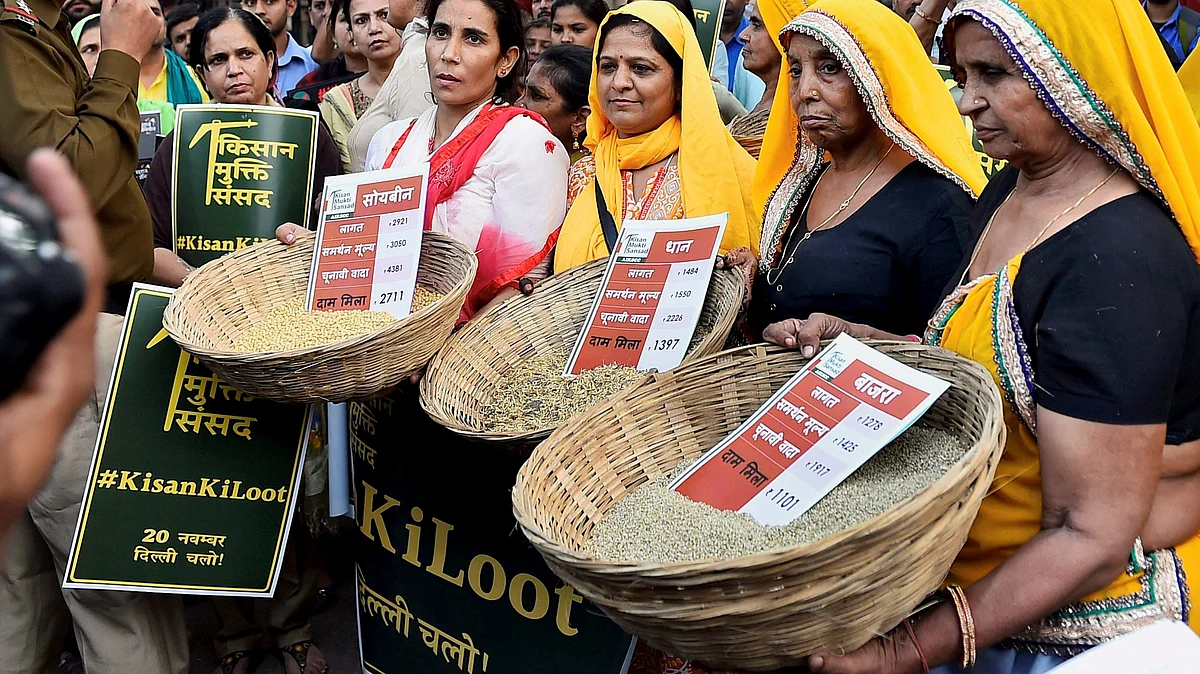Business
The MSP story repeats itself, in broken promises and token increases
The priorities of the Modi government seem peculiar, if we compare the hikes for the exotic niger to staple grains, pulses and millets

The recent announcement of a minimum support price (MSP) for kharif crops by the Cabinet Committee on Economic Affairs, following a meeting chaired by Prime Minister Narendra Modi on Wednesday, 28 May, reflects the union government’s seriousness of intent towards agriculture and the welfare of farmers.
Paddy remains the most widely cultivated kharif crop in India, grown on approximately 47.6 million hectares during the season. This crop also generates the highest employment for agricultural labourers. Despite its importance, paddy is among the crops that have received the lowest MSP hike this year.
Its MSP has been increased from Rs 2,300 to Rs 2,369 per quintal — an increment of just 3 per cent.
In the context of an annual inflation rate hovering around 5 per cent, this ‘hike’ effectively translates into a real-term decline in support for paddy cultivation.
Concerns about fairness in MSP allocations are heightened when we look at moong dal. The MSP for moong has seen an increase of less than 1 per cent. This is striking, given that earlier this year, the government launched the Mission for Atmanirbharta in Pulses with the aim of boosting domestic pulse production. The initiative is backed by a budgetary provision of Rs 1,000 crore.
As the world’s largest producer and consumer of pulses, India faces a growing gap between demand and supply, leading to sharp price rises in both wholesale and retail markets. The mission’s aim is purportedly to expand the area under pulse cultivation and incentivise farmers to grow more of them, but the marginal MSP increase casts doubt on the current regime’s commitment to this avowed cause.
Published: undefined
The MSP hikes for other pulses have been slightly higher, but not substantial enough to drive a significant shift from other crops to pulses.
On the other hand, coarse grains such as ragi, jowar, and bajra have seen relatively better MSP increases. However, their market remains limited, despite promotional campaigns to boost their consumption under the Millet Mission, Shree Anna— and there has been little enough done beyond these, little enough of material change.
Interestingly, the highest MSP increase has been for niger seed (Ramtil, karale), which has gone up by Rs 820 per quintal. Traditionally used as bird feed, niger — which originated in Africa — is now being marketed as a lifestyle product. The significant hike in its MSP, while relatively ignoring staple crops, raises questions about the government’s priorities in agricultural policy.
Commenting on the MSP announcements, Dr Sunilam, a leader of the Samyukt Kisan Morcha, told National Herald: "Farmers have been betrayed once again. The Swaminathan Committee's recommended formula of 'C2 + 50 per cent' for crop pricing [C2 being the cost of production] has never been implemented. This time is no different."
It’s worth recalling that many senior BJP leaders, including the prime minister himself, had once promised to double farmers’ incomes. The deadline of that promise has long passed.
Not only has the promise gone unfulfilled, but farmers are witnessing a steady decline in their actual income.
Published: undefined
Follow us on: Facebook, Twitter, Google News, Instagram
Join our official telegram channel (@nationalherald) and stay updated with the latest headlines
Published: undefined